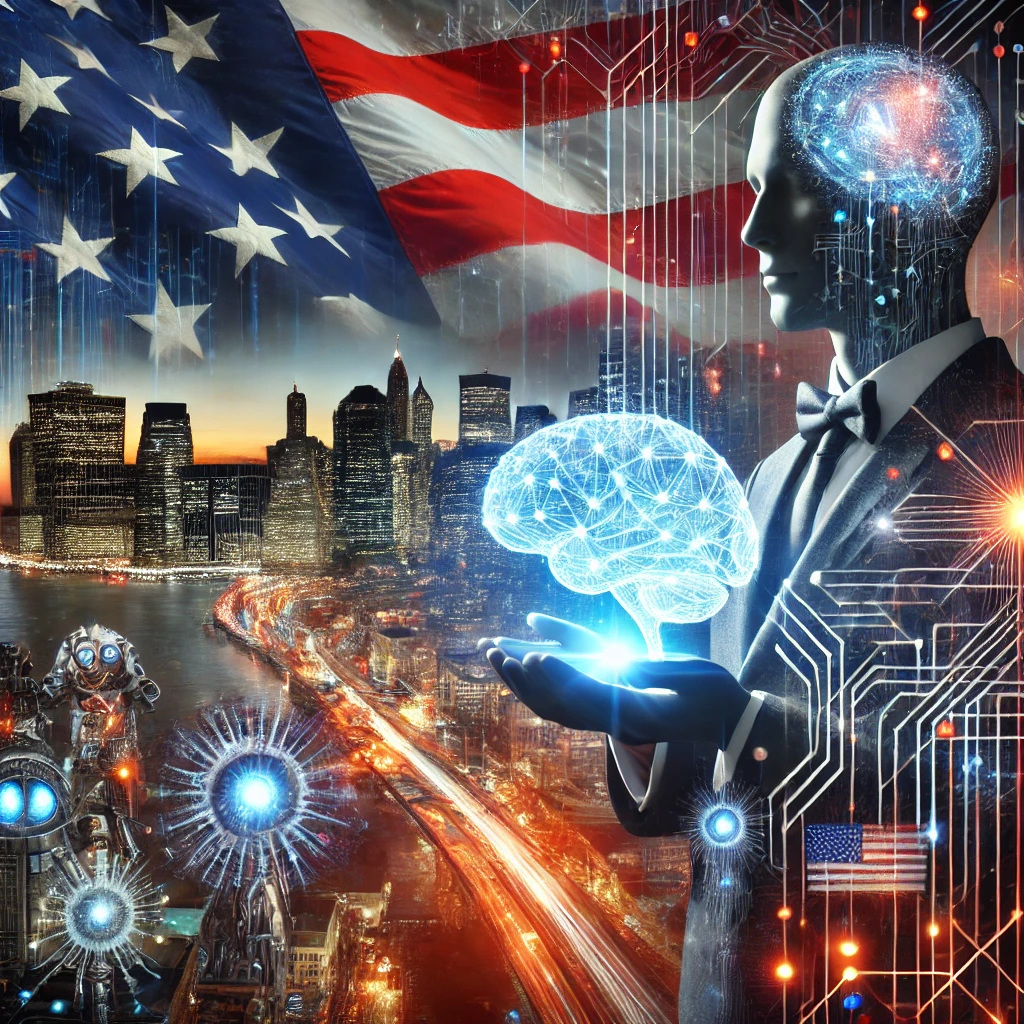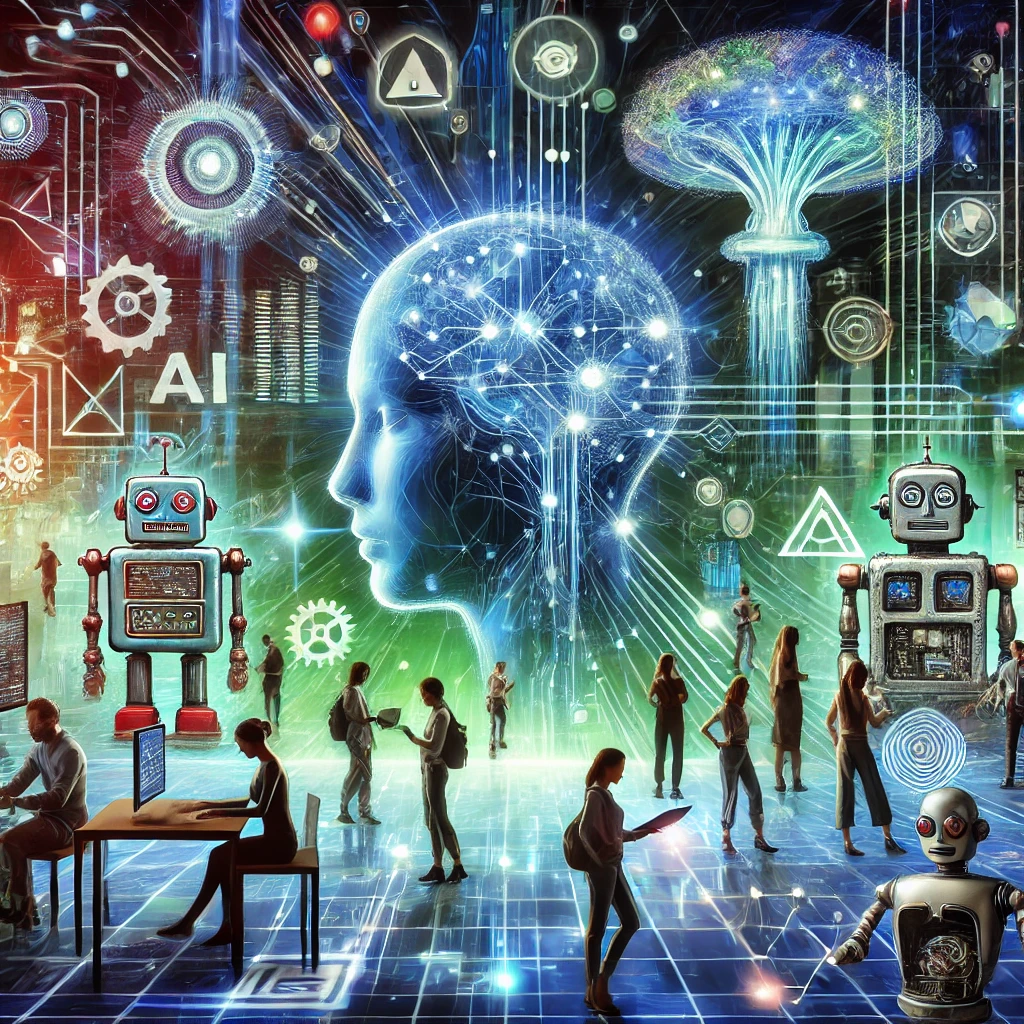Trump’s Executive Order on AI: A New Vision for Innovation and Global Leadership
On Thursday, January 24, 2025, former President Donald Trump signed a new executive order aimed at reshaping the future of artificial intelligence (AI) development in the United States. The sweeping directive revokes several key AI-related policies introduced by the Biden administration and establishes a new framework that prioritizes innovation and economic competitiveness. The move has sparked a wave of debate across political, technological, and social spheres, as it signals a dramatic shift in the government’s approach to one of the most transformative technologies of our time.
What is Trump’s New Executive Order on AI?
The executive order, titled “Developing Artificial Intelligence Free from Ideological Bias”, outlines Trump’s vision for AI development in the U.S. The central theme of the order is to remove barriers to American AI innovation, particularly those that the Trump administration claims stem from the policies of the previous administration. According to the order, the U.S. must lead the global AI race by developing systems that are free from ideological bias or engineered social agendas.
Trump’s order sets a clear directive to review and revise AI-related policies, directives, and regulations that were established during Joe Biden’s presidency. One of the main targets of the new order is the 2023 executive order issued by the Biden administration, which placed new requirements on U.S. federal agencies to demonstrate that their AI tools do not harm the public.
A Bold Reversal of Biden’s AI Policies
Trump’s new directive directly reverses many of the provisions of Biden’s 2023 AI policies. For example, Biden’s approach included provisions to ensure that AI systems used by the government did not discriminate based on race, gender, or disability. It also called for transparency from tech companies developing powerful AI models, requiring them to share details about their models with the government before they were deployed.
The Trump administration has sharply criticized these regulations, claiming that they stifled innovation and placed unnecessary burdens on companies developing AI. The White House has argued that these policies threatened America’s technological leadership and were overly restrictive, potentially impeding the growth of AI technologies vital to national security and economic competitiveness.
Trump’s order directs the White House to revisit and revise the directives governing federal agencies’ use of AI, which affects how they acquire and deploy AI tools. The goal is to ensure that these tools align with Trump’s priorities: human flourishing, national security, and economic competitiveness.
A New Vision for AI: Human Flourishing Over Restrictive Regulation
One of the key phrases in Trump’s order is the emphasis on “human flourishing.” This term resonates with Trump’s long-standing campaign promise to eliminate what he views as excessive regulation and government control over AI technologies. The new order frames AI not just as a technological tool, but as a pivotal force in improving the lives of Americans and maintaining the country’s global competitive edge.
While Biden’s AI policies focused heavily on ethical considerations—such as ensuring fairness and preventing bias in AI systems—Trump’s order advocates for a more market-driven approach. It stresses the importance of fostering innovation, reducing government interference, and advancing AI technologies that can contribute to the economy and national defense.
The order also creates a new role within the White House: the Special Advisor for AI and Crypto, a position assigned to David Sacks, a venture capitalist and former PayPal executive. This move signals a greater focus on private-sector-led innovation and aligning technological advancements with national priorities.
The Critics and the Future of AI Regulation
Not everyone agrees with the direction Trump’s executive order is taking. Critics, including Alondra Nelson, former acting director of the White House Office of Science and Technology Policy under Biden, argue that Trump’s order is “backward looking” and could undo initiatives that have already begun to benefit the public. Nelson pointed out that Biden’s policies were designed to strike a balance between protecting innovation and ensuring that AI technologies do not harm people or perpetuate societal inequities.
Another concern raised by experts is the potential for a lack of safeguards as AI technologies continue to evolve rapidly. The risks of AI discrimination, misinformation, and security breaches are significant, and many fear that without proper oversight, the private sector may prioritize profits over the well-being of individuals, particularly vulnerable populations.
What’s Next? The Race for Global AI Leadership
Trump’s executive order signals the beginning of a new chapter in the AI regulatory landscape. As the U.S. continues its efforts to assert global leadership in artificial intelligence, the debate over how to balance innovation with ethical considerations will likely continue. Will the country prioritize unfettered innovation, or will it adopt policies that ensure AI serves the public good and avoids harmful consequences?
One thing is certain: AI will remain a central issue in U.S. politics, as it shapes everything from the economy and workforce to national security and civil liberties. In the coming months, we will likely see further developments in both the government’s role in regulating AI and the private sector’s responsibility in ensuring AI technologies are developed ethically and safely.
Trump’s new executive order is just the first step in what promises to be a dynamic and contentious period in AI development. The next few months will be critical as the administration develops a comprehensive AI action plan and works to implement policies that balance the promotion of innovation with public safety and equity.
The Trump administration’s executive order on AI sets the stage for a bold, new approach to technology development. With an emphasis on innovation, national competitiveness, and the removal of regulations seen as obstacles, the U.S. is poised to make significant strides in the AI space. However, the road ahead is filled with complexities, as the debate over ethical AI continues to intensify.
Stay tuned as the government and industry leaders work together to navigate the ever-evolving landscape of artificial intelligence. The decisions made today will shape the future of technology and its role in society for years to come.


Post Comment